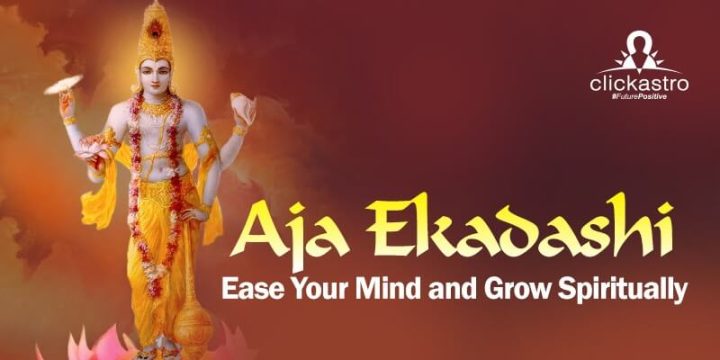Contents[hide]
Aja Ekadashi 2024 is on Thursday, August 29Like all other Ekadashis, Aja Ekadashi is also dedicated to the worship of Lord Vishnu. Devotees observe vrat on this day to cleanse their sins and gain blessing for a healthy and prosperous life. Regions that follow the Amavasya Calendar observe the Aja Ekadashi during the Shravana month. But despite the difference in months, the ritual and observation of vrat remain the same all across the country.
Aja Ekadashi Rituals
Vrat is observed by devotees to please Lord Vishnu on the day of Aja Ekadashi. The fasting begins on the day before Ekadashi (Dashami day). Nirjala vrat, where the person refrains from consuming even water, is observed only by the staunchest of devotees. The most common method adopted during fasting is to limit oneself to a sattvic diet on Dashami day in order to purify one’s body and mind. On the day of Ekadashi, the devotee should get up early in the morning, preferably during Brahma Muhurta (4 am). After bathing, the puja place is cleaned and an idol of Lord Vishnu is placed in the auspicious position. A Kalash is also placed over a plate of rice. A Diya is then kept in front of Lord Vishnu and lit. Then Lord Vishnu is worshipped with flowers, fruits and other essentials. All kinds of grains and rice should be avoided as part of the vrat. The devotees spend the day chanting the different names of Lord Vishnu and reading holy texts like Bhagavad Gita. The person should take care to keep their mind free of anger and other impure thoughts. He or she should be virtuous in words and actions throughout day and night. The vrat ends on the next day (Dwadashi day) morning. Normal food is eaten along with others in the family as part of it.Aja Ekadashi Important Timings
- Ekadashi Tithi starts – August 29, 2024 1:20 AM
- Ekadashi Tithi ends – August 30, 2024 1:38 AM
Aja Ekadashi Vrat Story
Once upon a time, in Treta Yuga, there lived a king by the name of Harishchandra. King Harishchandra was kind and honest and was adored by his subjects. His wife was Taramati and they had a son named Rohitashva. They lived happily, as did the people in the country. Once, while pursuing a deer in the forest, under the influence of Vignaraja (Lord Ganesha), King Harishchandra happened to abuse Sage Vishwamitra who was in meditation. Vignaraja wanted to hinder Sage Vishwamatra’s attempts to gain sacred knowledge and had used King Harishchandra for it. Sage Vishwamitra’s tapasya was broken and the sage lost the knowledge thus far gained through meditation. In anger, he proceeded to curse Harishchandra. But King Harishchandra, now free from the influence of Vignaraja, explained the truth and asked for forgiveness. Still angry, Sage Vishwamithra then asked King Harishchandra to donate to conducting the Rajasuya Yajna. To satisfy Sage Viswamithra, King Harischandra had to give up his kingdom and sell his wife, son and even himself to a Chandala. As a servant of the Chandala, Harishchandra, now no longer king, had to prepare corpses for cremation daily in return for measly pay. After years of hard work and no respite, a dejected Harishchandra was on the verge of giving up his pious way of life when Gautam Rishi happened to arrive there. Harishchandra narrated to Rishi his plight. Hearing it, Gautam Rishi asked Harishchandra to observe the Aja Ekadashi vrat.
Harishchandra did as was told and as a result of his staunch observation of the vrat, all of his past sins were washed away. He was reunited with his wife and son and also got back his kingdom. Thus he became King Harishchandra again. After death, he received a permanent position in heaven along with his family. All of this happened because King Harishchandra observed the Aja Ekadashi vrat.
As a servant of the Chandala, Harishchandra, now no longer king, had to prepare corpses for cremation daily in return for measly pay. After years of hard work and no respite, a dejected Harishchandra was on the verge of giving up his pious way of life when Gautam Rishi happened to arrive there. Harishchandra narrated to Rishi his plight. Hearing it, Gautam Rishi asked Harishchandra to observe the Aja Ekadashi vrat.
Harishchandra did as was told and as a result of his staunch observation of the vrat, all of his past sins were washed away. He was reunited with his wife and son and also got back his kingdom. Thus he became King Harishchandra again. After death, he received a permanent position in heaven along with his family. All of this happened because King Harishchandra observed the Aja Ekadashi vrat.







